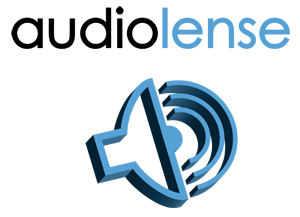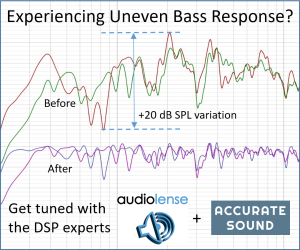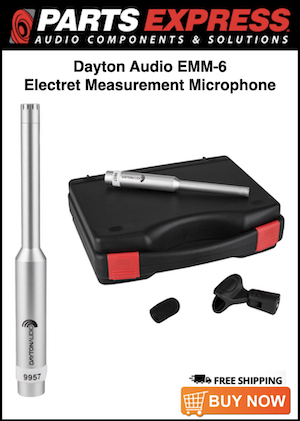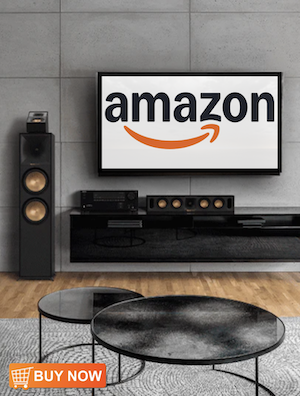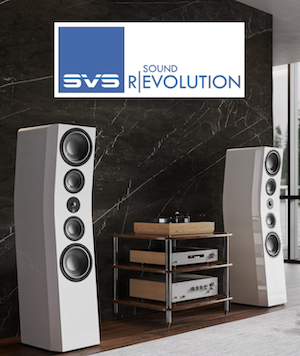-
AUDIO VIDEO PROCESSING, SETUP & ENVIRONMENTOfficial REW (Room EQ Wizard) Support Forum Audiolense User Forum Calibration Equipment Auto-EQ Platforms / Immersive Audio Codecs Video Display Technologies / Calibration AV System Setup and Support Listening Room / Home Theater Build Projects Room Acoustics and Treatments AV Showcase Movies / Music / TV / Streaming
-
AUDIO VIDEO DISCUSSION / EQUIPMENTHome Theater / Audio and Video - Misc Topics Essence For Hi Res Audio AV Equipment Advice and Pricing Awesome Deals and Budget AV Equipment AV Receivers / Processors / Amps UHD / Blu-ray / CD Players / Streaming Devices Two Channel Hi-Fi Equipment DIY Audio Projects Computer Systems - HTPC / Gaming HD and UHD Flat Screen Displays Projectors and Projection Screens AV Accessories Buy - Sell - Trade
Navigation
Install the app
How to install the app on iOS
Follow along with the video below to see how to install our site as a web app on your home screen.
Note: This feature may not be available in some browsers.
More options
You are using an out of date browser. It may not display this or other websites correctly.
You should upgrade or use an alternative browser.
You should upgrade or use an alternative browser.
Any point in physically time align speaker elements?
- Thread starter Cyberkul
- Start date
BenToronto
Member
- Joined
- May 22, 2017
- Posts
- 118
Data point
Don't laugh, but I experimented using DSP with time-aligning a Klipschorn bass (below 130 Hz) with my electrostatic panels. We're talking 16 feet. My results (and agreed by some others who posted) is it can make a small improvement in careful A-B testing, maybe.
The general issue of time alignment is something from engineering dream land where the essential requirement for alignment seems unarguable, not music listening by humans land.
BTW, in so far as there is any matching in an ESL hybrid system, a Kliipshorn bass is quite right.
Don't laugh, but I experimented using DSP with time-aligning a Klipschorn bass (below 130 Hz) with my electrostatic panels. We're talking 16 feet. My results (and agreed by some others who posted) is it can make a small improvement in careful A-B testing, maybe.
The general issue of time alignment is something from engineering dream land where the essential requirement for alignment seems unarguable, not music listening by humans land.
BTW, in so far as there is any matching in an ESL hybrid system, a Kliipshorn bass is quite right.
I have K-horns corrected and time-aligned with Audiolense digital XO. I can tell you that time alignment is worth the effort.Data point
Don't laugh, but I experimented using DSP with time-aligning a Klipschorn bass (below 130 Hz) with my electrostatic panels. We're talking 16 feet. My results (and agreed by some others who posted) is it can make a small improvement in careful A-B testing, maybe.
The general issue of time alignment is something from engineering dream land where the essential requirement for alignment seems unarguable, not music listening by humans land.
BTW, in so far as there is any matching in an ESL hybrid system, a Kliipshorn bass is quite right.
Most loudspeaker applications have so many other acoustic problems that the more subtle corrections are not perceivable.
BenToronto
Member
- Joined
- May 22, 2017
- Posts
- 118
1. Your XO 400 Hz versus my 130 (tested with instant A-B switching although not blind).
2. If ever there was a speaker that had extreme alignment issues, it is the Klipschorn.
3. Speakers with hideous square wave outputs on an oscilloscope may not sound so deficient on music.
2. If ever there was a speaker that had extreme alignment issues, it is the Klipschorn.
3. Speakers with hideous square wave outputs on an oscilloscope may not sound so deficient on music.
I agree with hulkss that with many speakers other problems may be dominant.
But time alignment can compensate the doubling of content around the crossover frequency, as occurs for example with LR4 crossovers. This noticeably enhances clarity, but needs changes to the filter transfer function towards constant group delay characteristics.
But time alignment can compensate the doubling of content around the crossover frequency, as occurs for example with LR4 crossovers. This noticeably enhances clarity, but needs changes to the filter transfer function towards constant group delay characteristics.
Would Audiolense take care of all this, or is some "tuning" beneficial?I agree with hulkss that with many speakers other problems may be dominant.
But time alignment can compensate the doubling of content around the crossover frequency, as occurs for example with LR4 crossovers. This noticeably enhances clarity, but needs changes to the filter transfer function towards constant group delay characteristics.
Audiolense time aligns the crossovers and matches phase at the crossover frequency if you are using TTD correction. This is more problematic if using frequency only correction.Would Audiolense take care of all this, or is some "tuning" beneficial?
ChrisPercival
Registered
- Joined
- Jul 21, 2020
- Posts
- 12
I haven’t done experiments to confirm that time alignment is audible. But I do feel that when performing measurements it’s really easy to see that the crossover is smooth if there is time alignment. And I will use the delay in the dsp crosssover to accomplish this.
Physical time alignment of large horns is problematic because it can really screw up the midrange baffling. The diffraction and reflections effects seem daunting to me.
The most important thing is to understand the directivity and power response characteristic of each of the drivers and choose the proper crossover frequencies accordingly.
IMHO,
chris
Physical time alignment of large horns is problematic because it can really screw up the midrange baffling. The diffraction and reflections effects seem daunting to me.
The most important thing is to understand the directivity and power response characteristic of each of the drivers and choose the proper crossover frequencies accordingly.
IMHO,
chris
You should physically align drivers so they stay aligned in different listening positions. For example, horns should be arranged vertically in the same plane. Audiolense can then align them in time for the main listening position. If you move side-to-side they will remain in acceptable alignment. If they were arranged horizontally, the timing would shift with left-right movement.
Jimp540
Member
- Joined
- Apr 30, 2020
- Posts
- 10
More
- Preamp, Processor or Receiver
- Yamaha RX-V1400, MiniDSP-2x4-HD, Behringer DSP1124
- Main Amp
- Yamaha RX-V1400 - low biamp
- Additional Amp
- Crown Com-Tech 210 - high biamp
- Other Amp
- AudioSource AMP One - Home sub
- Universal / Blu-ray / CD Player
- Sony DVD, Panasonic Blu-ray
- Front Speakers
- E/V Sentry IV
- Center Channel Speaker
- Klipsh and Mirage
- Surround Speakers
- Mirage OmniSat
- Surround Back Speakers
- Mirage OmniSat
- Subwoofers
- Polk and homemade
- Other Speakers
- MiniDSP 2x4
- Screen
- 60
- Video Display Device
- Sony SXRD rear projection
I have old E/V Sentry IV horns. I have replaced the E/V tweeter with a Beyma slot tweeter. I have moved the tweeter from its original bracket mount below the midrange horn to a platform over the midrange horn that allows me to physically achieve time alignment with the midrange horn. I am bi-amping the speaker so with the tweeter/mid physically aligned, I use a MiniDSP 2x4 HD to eq the folded horn bass cab and mid/tweeter feeds as well as providing delay to the mid/tweeter to electronically achieve time alignment with the bass cabinet. Since the folded horn has a very long equivalent length, the timing adjustment is significant and I find that once time aligned, imaging improves significantly but also the clarity and articulation of percussion and such is very noticeable. Not saying it sounded bad before timing, but there is a major improvement for me.
juicehifi
Audiolense
- Joined
- Feb 5, 2018
- Posts
- 896
Only direct sound is time aligned. Mostly based on the impulse response from the tweeter.
Actually, everything is time aligned for the time domain window.
Yes, this is a valid point.Try to physically position drivers so they stay time aligned (as much as possible) in all listening positions. Audiolense can only time align in one location.
juicehifi
Audiolense
- Joined
- Feb 5, 2018
- Posts
- 896
Would Audiolense take care of all this, or is some "tuning" beneficial?
Audiolense time aligns the crossovers and matches phase at the crossover frequency if you are using TTD correction. This is more problematic if using frequency only correction.
The drivers are time aligned with frequency correction too.
If a minimum delay crossover is used, the drivers are first time aligned, then phase aligned to ensure that they add up at the crossover point.
Jimp540
Member
- Joined
- Apr 30, 2020
- Posts
- 10
More
- Preamp, Processor or Receiver
- Yamaha RX-V1400, MiniDSP-2x4-HD, Behringer DSP1124
- Main Amp
- Yamaha RX-V1400 - low biamp
- Additional Amp
- Crown Com-Tech 210 - high biamp
- Other Amp
- AudioSource AMP One - Home sub
- Universal / Blu-ray / CD Player
- Sony DVD, Panasonic Blu-ray
- Front Speakers
- E/V Sentry IV
- Center Channel Speaker
- Klipsh and Mirage
- Surround Speakers
- Mirage OmniSat
- Surround Back Speakers
- Mirage OmniSat
- Subwoofers
- Polk and homemade
- Other Speakers
- MiniDSP 2x4
- Screen
- 60
- Video Display Device
- Sony SXRD rear projection
Will physically aligning horns for time alignment possibly cause complications at crossover frequencies due to the shape of the wavefront coming out of the two horns? Some horns have a flatter wavefront while others may be be more spherical…Can sliding the mouth of one horn with respect to another cause phase cancellation issues as you move off axis even though on axis time alignment is good?You should physically align drivers so they stay aligned in different listening positions. For example, horns should be arranged vertically in the same plane. Audiolense can then align them in time for the main listening position. If you move side-to-side they will remain in acceptable alignment. If they were arranged horizontally, the timing would shift with left-right movement.
I have a 5-way setup, BR-bass, and the rest is horns. I have chosen the crossover frequencies more or less from the natural roll-off of each horn. Except the midrange-horn, where I have a larger range to play with. It is a 65cm dia LeCleach horn, and I have tried frequencies between 2,5 - 7kHz. I think it sounds best around 2,8kHz, but I don`t know how well it matches the directivity of the upper midrange LeCleach 20cm horn. I have had a look at some polar response plots of similar size horns, and it don`t look too bad.I haven’t done experiments to confirm that time alignment is audible. But I do feel that when performing measurements it’s really easy to see that the crossover is smooth if there is time alignment. And I will use the delay in the dsp crosssover to accomplish this.
Physical time alignment of large horns is problematic because it can really screw up the midrange baffling. The diffraction and reflections effects seem daunting to me.
The most important thing is to understand the directivity and power response characteristic of each of the drivers and choose the proper crossover frequencies accordingly.
IMHO,
chris
Yes, I have gotten this advice before, and I now have everything vertically aligned, except the tweeter, due to low ceilings.. Before I had the BR-bass boxes placed at the inside of the stack of horns. I also had the 4 horns more or less physically time aligned. So far I think it sounded better than my current setup, but I`m not finished with my AL-setup yet.You should physically align drivers so they stay aligned in different listening positions. For example, horns should be arranged vertically in the same plane. Audiolense can then align them in time for the main listening position. If you move side-to-side they will remain in acceptable alignment. If they were arranged horizontally, the timing would shift with left-right movement.
Popular tags
20th century fox
4k blu-ray
4k uhd
4k ultrahd
action
adventure
animated
animation
bass
blu-ray
calibration
comedy
comics
denon
dirac
dirac live
disney
dolby atmos
drama
fantasy
hdmi 2.1
home theater
horror
kaleidescape
klipsch
lionsgate
marantz
movies
onkyo
paramount
pioneer
rew
romance
sci-fi
scream factory
shout factory
sony
stormaudio
subwoofer
svs
terror
thriller
uhd
ultrahd
ultrahd 4k
universal
value electronics
warner
warner brothers
well go usa








